JEDDAH: A history of civilizations stretching back thousands of years, along with a distinctive landscape and terrain, have left the Tabuk region in Saudi Arabia’s northwest with a host of popular dishes that are central to its everyday culture.
But during the holy month many dishes take on a special significance as residents of Tabuk, its governorates and centers prepare the Ramadan table with iftar and suhoor meals, such as mjallah or khamiaa, a saj dough made from wheat.
The dough is cut once ready and has ghee or olive oil, milk and honey added.
Maqtouta is another dish also known as mouqalqal or hamis, while mansaf are dishes made of meat or chicken with rice and bread, and served for sahoor.
The Ramadan table in Tabuk also contains a grain soup. Wheat is soaked overnight, then water is added, along with meat and onions. Special spices or herbs, such is black pepper and Artemisia argentea, can be added, then water is gradually added while constantly stirring. When the grain is cooked, some families add milk to increase the soup’s nutritional value. The mix is then stirred and served.
Lentil soup, another favorite, is prepared by pouring water over the lentils with vegetables added to taste, until they are cooked. The ingredients are then mashed and served as soup.
Freekeh soup is also made with wheat. Green ears of wheat are picked around six weeks before harvest, then grilled to separate the grains from the peel. Afterward, the grains are ground with millstones and cooked with water along with meat, salt and black pepper.
Some cities on the region’s coasts are known for mutabbaq, a dough cut into rectangles and stuffed with chopped leek, eggs, tomatoes, black pepper and salt. The sides are then well-folded before they are cooked on saj (a convex metal griddle) and flipped until golden.
The Tabuk table is also famous for feteer, which is made from wheat flour, water and salt, and then cooked on saj, with some ghee added when served.
Desserts are also part of the variety of dishes adorning Ramadan tables, most notably luqaimat, a dough kneaded by hand until it becomes consistent and soft.
The dough is put in a hot place for some time, then small pieces are shaped into balls, fried in hot oil and constantly flipped until they become golden. Some people add to them sesame and honey.
Kunafa, a well-known dessert in the Arab world, is made of two layers of equally small vermicelli with cream/cheese in between. It is decorated with pistachios and cooked in the oven with sugar syrup on top once served.
Ramadan recipes give a taste of Tabuk’s incredible heritage
https://arab.news/wf6nw
Ramadan recipes give a taste of Tabuk’s incredible heritage

How honeybees drive biodiversity and strengthen ecosystems in Saudi Arabia and beyond

- By protecting honeybees, the Imam Turki bin Abdullah Royal Reserve provides a boost for the sustainable honey industry
- This keystone species, essential for sustaining life on Earth, faces threats from climate change, habitat loss, pesticides, and disease
RIYADH: Beyond the manufacture of honey, honeybees are also guardians of biodiversity and strong ecosystems. As a keystone species, they support plant diversity by pollinating wildflowers and provide a welcome boost to agricultural productivity.
Although small in size, without these precious insects, cascading effects could destabilize entire food chains and habitats for countless organisms.
Recognizing their importance, Saudi Arabia has undertaken active conservation efforts, demonstrating the Kingdom’s commitment to sustainable beekeeping and the protection of these industrious insects.

Together with other pollinators such as birds and bats, bees are vital to global agriculture, contributing to 35 percent of the world’s crop production by pollinating 87 of 115 leading food crops, according to the Food and Agriculture Organization.
Honeybees help to maintain plant diversity by pollinating a wide range of species, preventing any single plant from dominating. This balance is crucial for ecosystem resilience, enabling them to better withstand environmental challenges such as climate change and invasive species.
Wildflowers, which rely heavily on honeybees for reproduction, play a key role in this balance. These flowers provide food and shelter for birds, insects and small mammals, creating a ripple effect that supports a diverse array of species throughout the ecosystem.
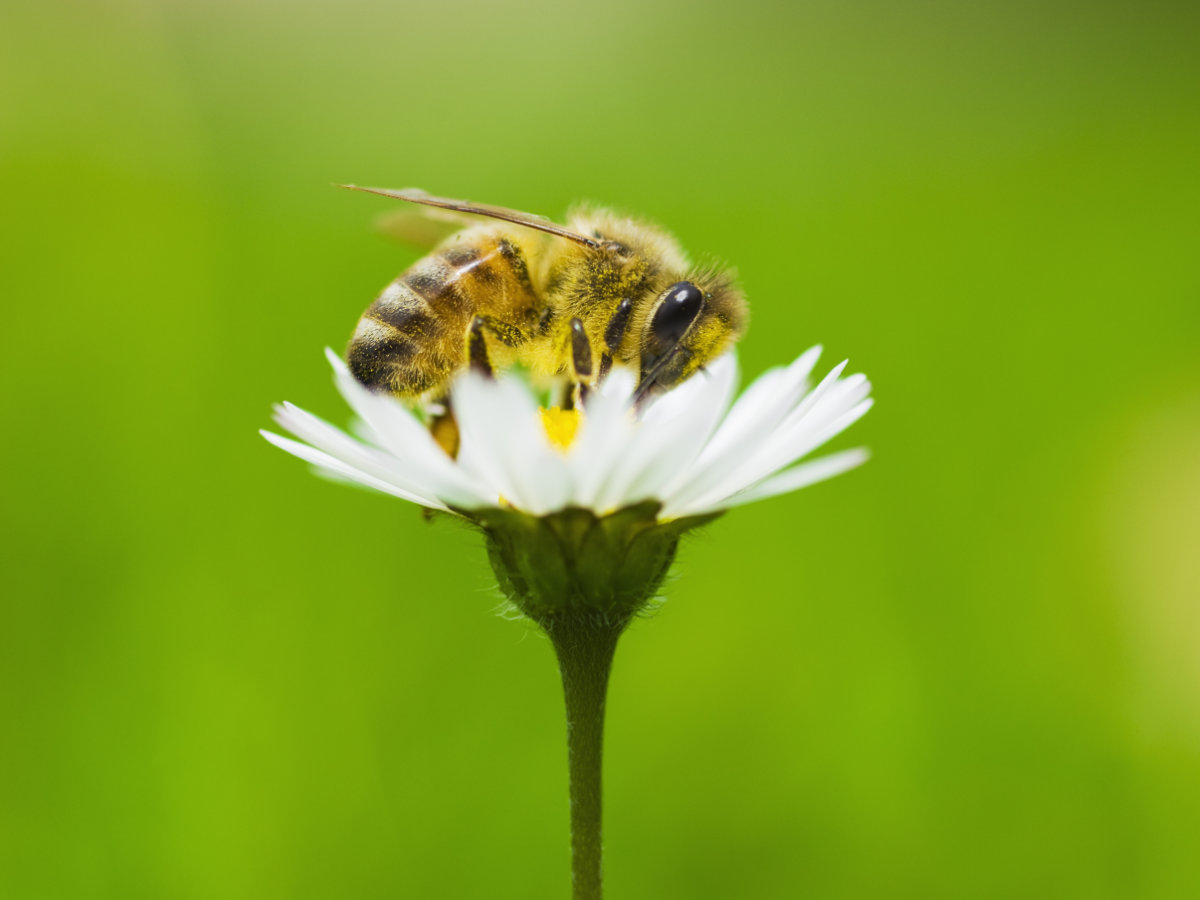
In Saudi Arabia, the Imam Turki bin Abdullah Royal Reserve hosts 25,737 beehives across 256 sites, fostering honeybee populations in a thriving and protected environment.
“The reserve provides a naturally protected environment rich in flowering plants, which serve as a primary source of nectar and pollen,” Abdulmajeed Al-Dhaban, a spokesperson for the reserve’s development authority, told Arab News.
“This ideal ecosystem enables bees to produce large quantities of high-quality honey, as well as other hive products like beeswax and royal jelly, which hold significant nutritional and economic value.”
Opinion
This section contains relevant reference points, placed in (Opinion field)
Thanks in part to the bees’ services, the reserve plays a vital role in enhancing the Kingdom’s food security.
“In addition to honey production, the reserve’s diverse ecosystem sustains natural pollination cycles,” Al-Dhaban said.
“This contributes to the productivity and quality of nearby cultivated crops and aligns with Saudi Arabia’s national efforts to achieve food security and self-sufficiency.”

Noting that pollination has a critical impact on the global food system, Al-Dhaban said bees are among the most efficient agents for transferring pollen between plants.
“This process not only enhances seed quality and density but also boosts agricultural crop production in terms of both quantity and quality,” he said. “Bee activity contributes directly to the production of honey, a valuable food product with significant health and economic benefits.”
Al-Dhaban also emphasized that honeybees are crucial for supporting food security and ensuring the long-term sustainability of natural resources.
This is particularly important as the reserve’s biodiversity creates an ideal environment for key Saudi crops, including acacia, Sidr trees and caper shrubs.
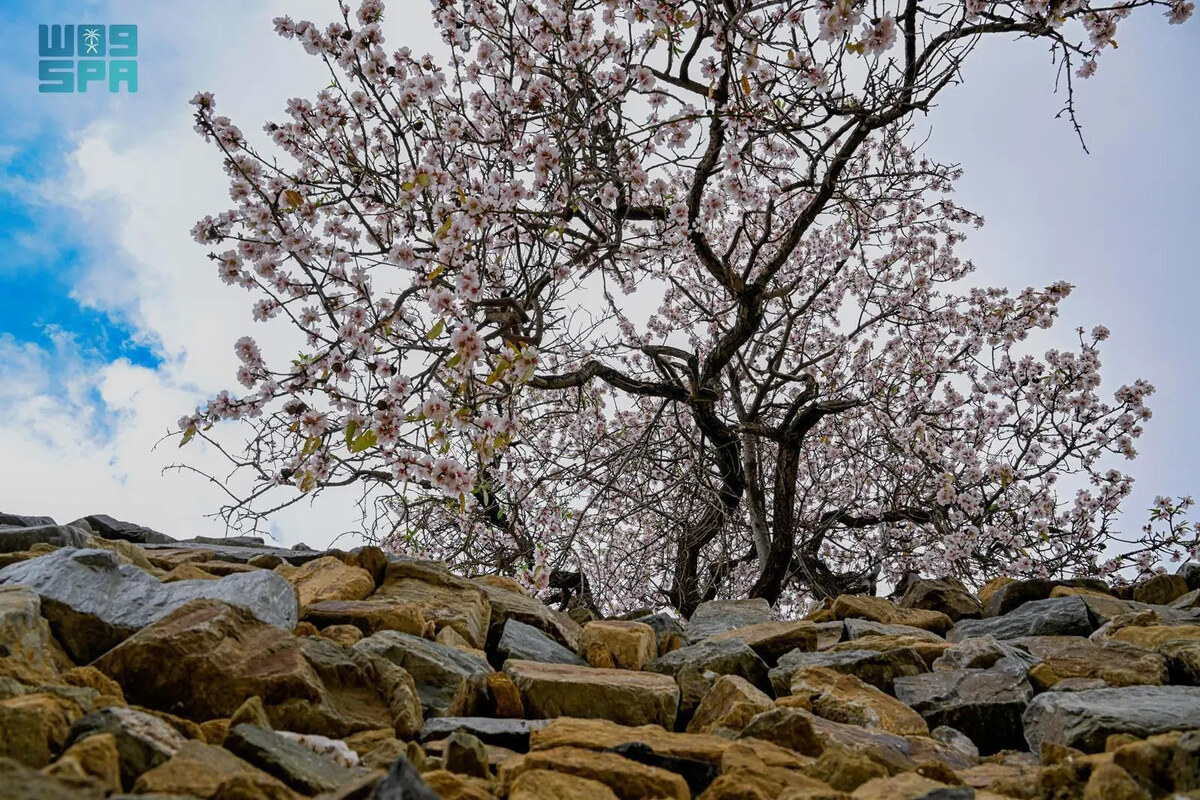
These plants benefit directly from bee pollination, which also increases the production of high-quality nectar for honey and other hive products. This natural cycle, Al-Dhaban said, supports local food supplies and strengthens the regional economy.
“By reducing reliance on imports and promoting local honey production, the reserve positions Saudi Arabia as a leader in sustainable honey sector development,” he said.
However, honeybee populations face serious threats, including climate change, habitat loss, pesticide use and disease.
To tackle this challenge, Mefleh Al-Jabreen, a beekeeper and owner of mobile apiaries at the Imam Turki bin Abdullah Royal Reserve, highlights the importance of selecting bee breeds that balance honey production and reproduction.
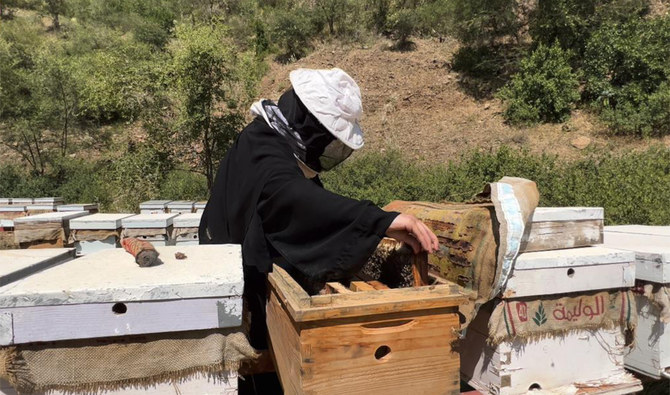
He told Arab News that his bees are transported to pastures rich in wild flowering trees, providing them with abundant nectar and pollen.
“We extract a specific amount of honey during gathering periods, leaving enough for the bees to sustain their hives,” he said.
Al-Jabreen explained that these sustainable practices help to maintain healthy honeybee populations while ensuring high-quality production.
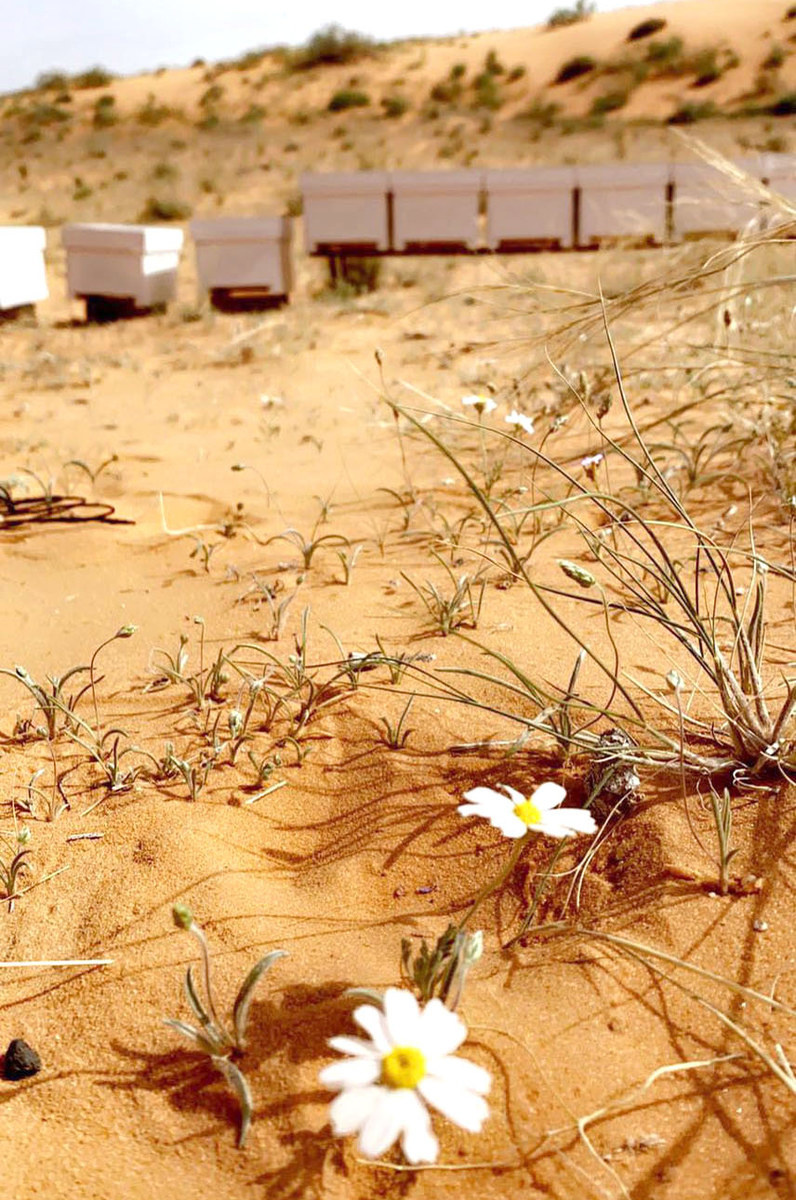
The reserve’s botanical diversity also supports the production of more than seven varieties of wild honey, many of which have earned international recognition for their quality.
Al-Jabreen also noted that the health of a hive largely depends on the queen bee. “A young, active queen laying eggs abundantly forms the foundation of a stable hive,” he said.
DID YOU KNOW?
• Crops, such as almonds and vanilla, are almost entirely dependent on honeybee pollination.
• Honeybee pollination prevents any single plant species from dominating, maintaining ecosystem balance.
• A young, active queen laying eggs abundantly forms the foundation of a stable hive.
He added that it is also crucial to monitor the number of worker bees and ensure the hive remains free of diseases and parasites, which can threaten colony stability and productivity.
Environmental challenges, such as extreme temperatures and unpredictable weather, pose significant threats to honeybee health, disrupting key hive processes such as honey production and reproduction.
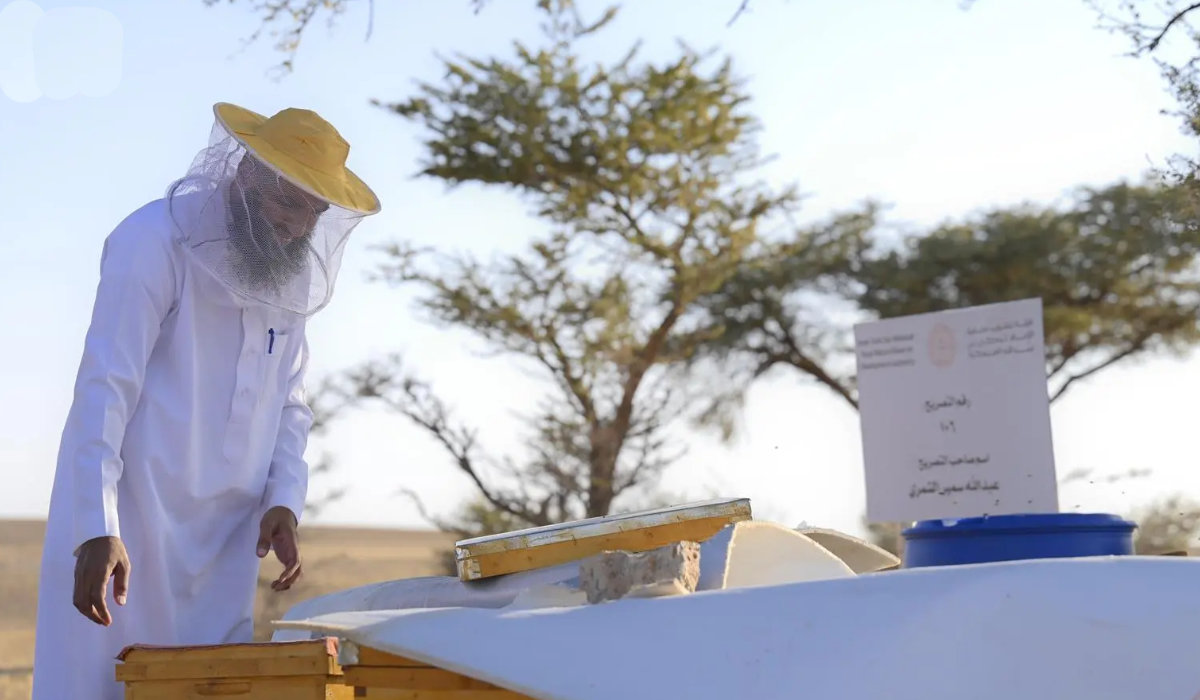
Al-Jabreen said that several factors must be considered when addressing these challenges: “These strategies include hive insulation, which helps reduce heat stress in extreme temperatures.”
Meanwhile, tree cover and shaded areas protect hives from direct sunlight during hot weather, while relocating hives to coastal regions in winter helps to keep bees active and productive.
“Windbreakers and hive relocation shield honeybees from strong winds and cold climates,” he added.
Al-Jabreen emphasized that plant diversity is essential for the survival of honeybees. “Bees are a vital part of the interconnected ecosystem, and their well-being depends on an abundance of floral and crop resources,” he said.

Recent innovations in beekeeping are helping to protect honeybee populations and enhance hive productivity. Al-Jabreen highlighted several key advances, such as special pollen-collecting boxes and bee breeds adapted to local climates.
He also hailed the growing collaboration between beekeepers and farmers. Organic farming practices, which avoid harmful chemicals, create safer environments for bees to thrive.
“We work with farmers to coordinate pesticide spraying schedules and relocate hives to safer areas,” Al-Jabreen said.
With growing threats to honeybee populations, governments, researchers and communities must prioritize their protection. Safeguarding these vital pollinators is key to ensuring a sustainable future for ecosystems, agriculture, and global food security.

The Bedouin’s best friend: Saudi saluki center works to preserve at-risk breed

- The Arabian saluki dates back 5,000 years but faces the threat of extinction due to crossbreeding, the loss of traditional desert habitats and lifestyle changes in region
- International Aseel Arabian Saluki Center aims to raise awareness of breeding standards and offers support for owners, including training and veterinary services
RIYADH: The Arabian saluki, which is believed to have originated in the Middle East, is one of the oldest purebred dogs in the world. It has been a loyal companion to Bedouin peoples dating back at least 5,000 years.
Now, however, it faces the threat of extinction as a result of crossbreeding but the International Aseel Arabian Saluki Center in Saudi Arabia is working hard to ensure it survives.
Unlike some breeds that rely primarily on sense of smell for hunting, salukis are sighthounds, meaning they visually identify prey. Known for their agility, intelligence and an impressive ability to take down prey, salukis long served Arab Bedouin tribes as hunters.
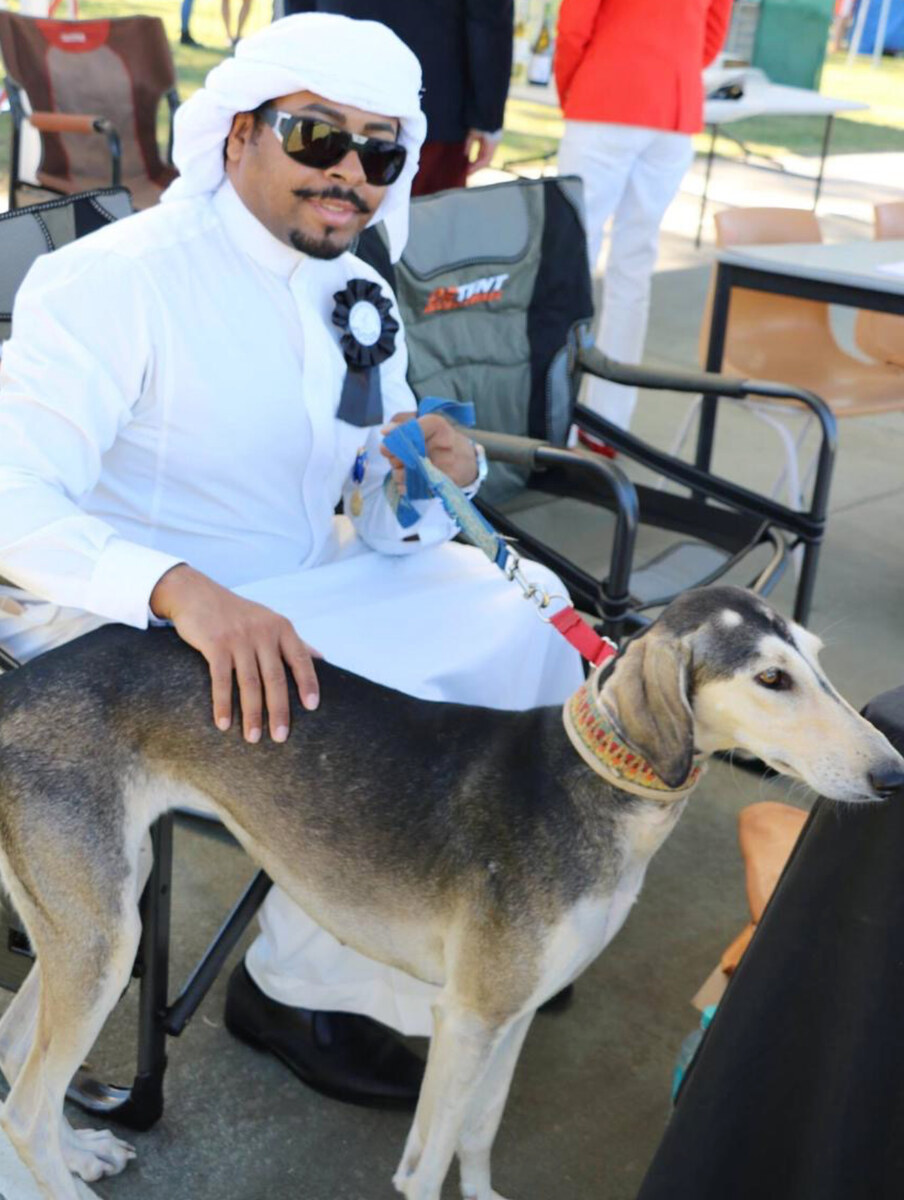
Fahad Al-Farhan, the president of the IAASC, explained the significance of the saluki to the region.
Arabian salukis are “deeply rooted in our culture and one of our main symbols of our national identity with falcons, Arabian horses and camels,” Al-Farhan told Arab News.
“The Arabian saluki and the traditional way of hunting is a vital part of Arabian culture and heritage.
FASTFACT
The Arabian saluki dates back 5,000 years but faces the threat of extinction due to crossbreeding, the loss of traditional desert habitats and lifestyle changes in region.
“In the old days, salukis were indispensable hunting companions, securing the existence of many of the Bedouin families.
“They are graceful and fast and they distinguish themselves with their endurance.”
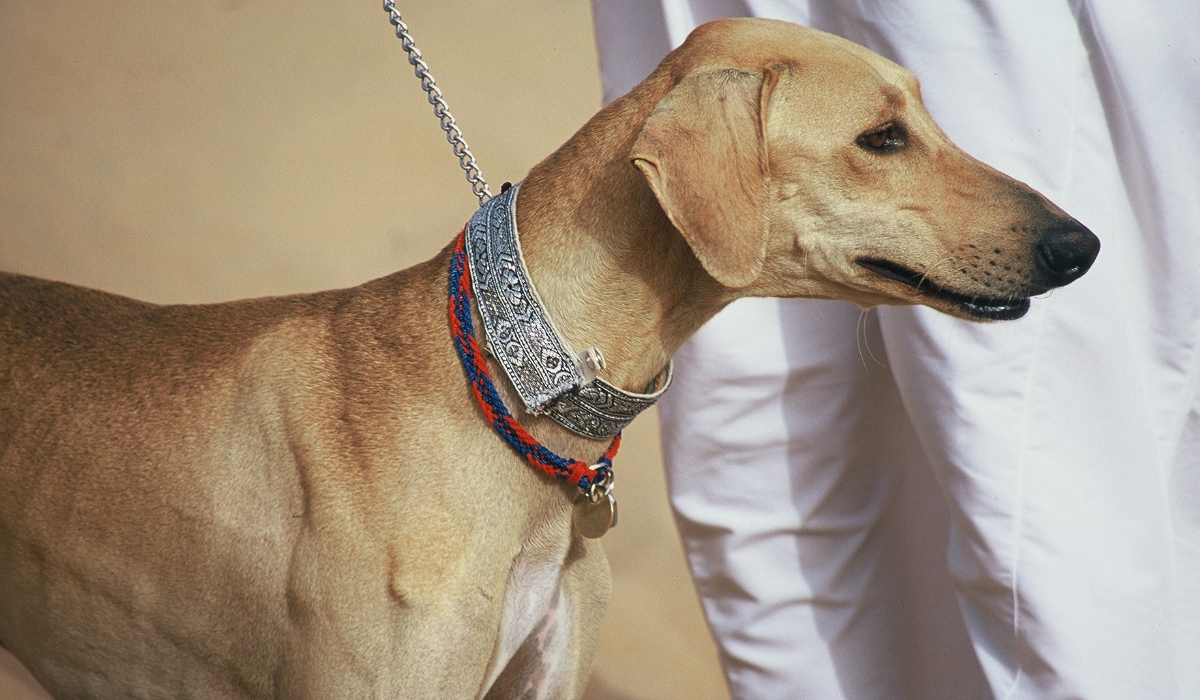
He noted the loyalty of the breed, quoting a proverb that states: “Only the owner sees the true face of a saluki.”
The animals are very attached to their families and loyal to their masters, said Al-Farhan, who is also president of the World Aseel Arabian Saluki Organization and the Saudi Kennel Club Union.
“Although the Arabian salukis are natural born hunters, they are calm and even-tempered representatives of their species,” he added.
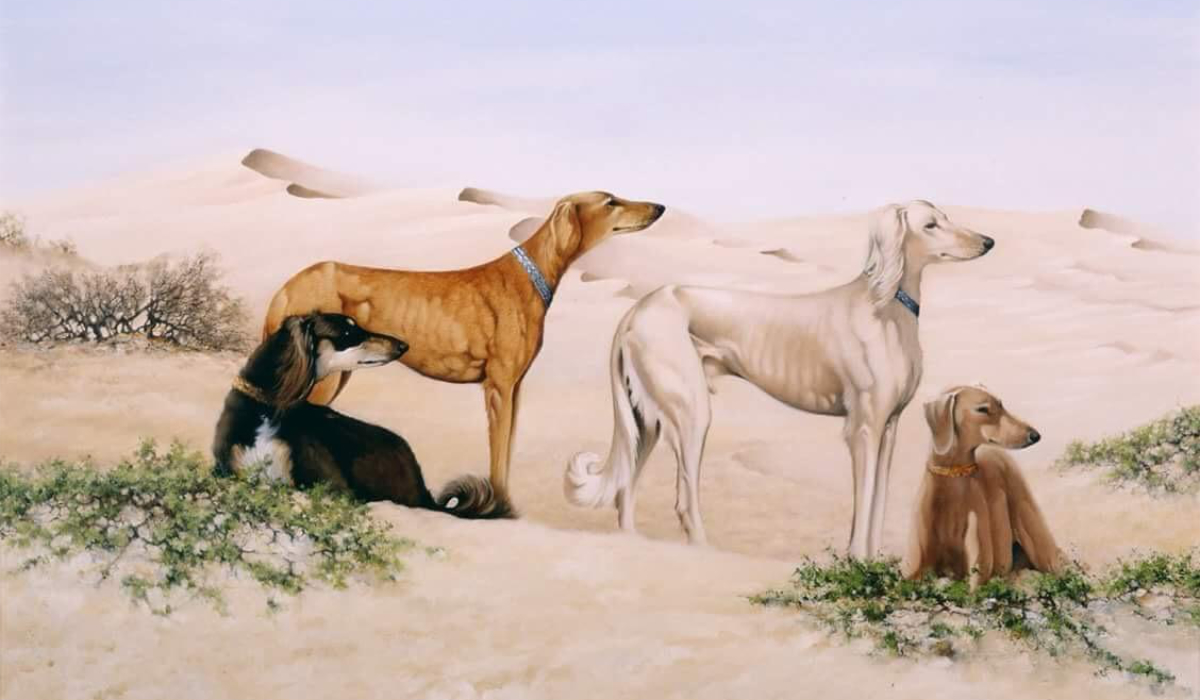
“They are also very curious and you even get the impression that they have a great sense of humor.”
However, the rapid economic growth of the region in the modern era has endangered the natural desert environments that were the traditional habitats not only of the saluki but other Arabian species including falcons, horses and camels, he warned.
“The deserts and Arab lifestyles that created the circumstances in which the Arabian horse, camels and the saluki flourished now no longer exist,” Al-Farhan said
“As a part of the cultural heritage of Arabian hunting, Bedouins have been breeding Arabian salukis for thousands of years (but) the saluki may be lost to our future generations unless steps are taken to preserve it.”
The Arabian Aseel Saluki Center in Saudi Arabia has a long list of members that includes saluki owners abroad, Al-Farhan added, and it works to raise public awareness of breeding standards.
It offers veterinary services worldwide, including health checks and vaccinations, health certificates, micro-chipping and DNA testing, together with advice about grooming and travel arrangements for owners moving their dogs to another country.
Al-Farhan said that the IAASC is working to register the Arabian saluki on UNESCO’s Intangible Cultural Heritage List, which recognizes and helps to preserve endangered cultural traditions and practices.
“We believe that the inscription of the Arabian saluki hound of Arabia (on the UNESCO lists) will promote the visibility of its heritage locally and worldwide,” he added.
Desert truffles: Saudi Arabia’s buried treasure

- Truffles offer various benefits beyond their culinary value. Their water is traditionally believed to have medicinal properties for eye ailments, based on a saying attributed to the Prophet Muhammad
QASSIM: A prized wild fungus found under the desert sands is popping up at markets across the Kingdom as Saudi Arabia’s truffle season is in full swing.
The central region of Qassim is a leading center for the cultivation of the desert truffle, known by its scientific name Terfeziaceae, or in Arabic as fage, as reported by the Saudi Press Agency.

Several natural environmental factors contribute to the area’s proliferation of truffles, including fertile soil, untouched land, access to fresh water, climate, and the presence of the sunrose or raqrooq plant, particularly in the northern Qassim areas of Shari and Al-Sa’ira.
Local farmer Abdulkarim Saleh Al-Rasheed harvests truffles found near the sunrose plant thriving in lowlands adjacent to wheat fields irrigated by overflowing pivot sprinklers.

He said that the emergence of truffles had coincided with the cessation of thunderstorms accompanied by lightning, a phenomenon traditionally linked to truffle growth.
Al-Rasheed told SPA that successful cultivation depended on irrigation timing, water salinity, soil fertility and temperature, each playing a crucial role.
For truffles, the optimal temperature is measured ten days after the typically mild “Wasm” season beginning in mid-October.
In northern Qassim, this translates to nighttime temperatures between 15 and 20 degrees Celsius.
Irrigation typically begins around Sept. 25 in areas where the sunrose plant is present, with truffles beginning to appear about 50 days later.
He added that cultivated truffles in northern Qassim typically begin to appear around Nov. 20.
Truffles offer various benefits beyond their culinary value. Their water is traditionally believed to have medicinal properties for eye ailments, based on a saying attributed to the Prophet Muhammad. They also serve as a natural food source for grazing animals.
The Qassim Truffle Festival, currently in its fourth year, is a marker of the region’s truffle production.
The ten-day festival features 18 booths showcasing truffles, a dedicated auction area, 32 booths for local producers, and other exhibits featuring dates, honey, food products, and related activities.
Poetry in spotlight at Jazan forum

- This year’s forum featured the participation of over 25 poets representing various poetic schools
JAZAN: The Sixth Poetry Forum was launched at the Jazan Literary Club on Thursday. The event forms part of the Jazan Winter Season 2025 and was held at the Grand Millennium Gizan Hotel. Yahya Al-Ghazwani, the secretary of the Jazan region and general supervisor of the winter festival, attended the event.
Hassan Al-Salhabi, the club’s president, spoke of the forum’s success over the past five years, which has boasted the participation of more than 200 poets.

He also mentioned the honoring of several literary figures in the Kingdom and the presentation of specialized critical studies on prominent poets.
This year’s forum, which ran for two days, featured the participation of over 25 poets representing various poetic schools, further enriching the cultural movement on the local literary map.
The opening included an artistic performance titled “Inspiration of Mirrors,” and the honoring of several participating writers and poets.
Two poetry sessions were held on the first day of the forum, featuring 10 poets who presented a variety of works in front of a large audience.
Saudi Arabia takes up position as secretariat of global coral reef body

- Coral reefs sustain 25 percent of the world’s marine biodiversity and generate an estimated $9.9 trillion annually in ecosystem services
JEDDAH: Saudi Arabia on Friday officially assumed its position as secretariat of the International Coral Reef Initiative, an organization that works to protect the planet’s coral reefs.
Representing 102 members and 45 countries responsible for 75 percent of the world’s reefs, ICRI plays a role in tackling environmental and economic challenges facing these vital ecosystems.
The virtual handover ceremony was attended by international representatives, including Peter Thomson, the UN’s special envoy for the ocean, as well as representatives from organizations such as the International Union for Conservation of Nature and the US State Department.
The Kingdom’s tenure as head of the body was confirmed during the ICRI’s 38th General Meeting in September 2024 and will be led by the Kingdom’s General Organization for the Conservation of Coral Reefs and Turtles in the Red Sea, also known as SHAMS.
“Saudi Arabia’s role as ICRI secretariat underscores our unwavering commitment to a sustainable future for coral reefs worldwide,” said Dr. Khaled Asfahani, CEO of SHAMS and chair of ICRI. “Through science, innovation, and collaboration, we aim to protect these vital ecosystems, ensuring their resilience for future generations while maintaining their invaluable contributions to the global economy.”
Coral reefs sustain 25 percent of the world’s marine biodiversity and generate an estimated $9.9 trillion annually in ecosystem services, from fisheries to tourism.
Yet, they are under siege from climate change, pollution, and overfishing. With Saudi Arabia at the helm, ICRI will craft its 2025–2027 Action Plan to address these threats.
The plan seeks to expand membership to include countries representing 90 percent of global coral reefs, strengthen regional collaborations in the Red Sea, South Asia, and East Africa, and integrate reef resilience into global biodiversity policies.





















